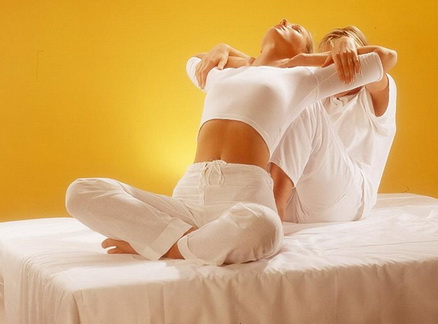History of Thai Massage
Traditional Ancient Thai massage is a unique form of Bodywork that incorporates Hatha Yoga, acupressure and reflexology with origins dating back about 2500 years. The roots of Thai massage are traced back to the founder of the practice (known as "Father Doctor") Shivaga Komarpaj, a doctor, friend and contemporary to the Buddha. Ancient Medical texts were carved in stone in attempts to preserve the tradition of Thai massage; these stone inscriptions still sit within the walls of the Wat Pho temple in Bangkok. In Thailand, there are many agricultural people who do a lot of physical work through the day and their muscles become very tight and sore, so they teach their children massage skills they learned from their parents. In this way Thai massage is passed down as an oral tradition. Massage has a unique style in each area of Thailand. When people would gather together from different regions they would exchange their techniques of massage. In this same way influences came from other countries such as China, India, Burma and Tibet creating its evolution and development.
Thai massage is recognized by various names. It is also referred to as Thai yoga massage or just yoga massage. In Thai massage, the therapist makes use of hands, knees, legs and feet and various yoga postures are produced. Quite simply, the therapist does the yoga for you.
A Thai massage session is a blend of yoga, acupressure, joint mobilization and muscle manipulation. Thai massage is performed on a mat on the floor or ground. In other Asian therapies, natural oils are often times used, but in Thai massage no oil is used.
The individual who wants Thai massage is asked to dress in loose-fitting and comfortable clothing. A typical Thai massage can last anywhere from one to two hours.
The positive effects of getting Thai yoga massage are numerous. Firstly, Thai massage sessions relax the whole body because yoga positions are performed in the course of the massage session stretching and relaxing the muscles. Shortly after the massage, one feels totally relaxed and a sense of peacefulness.
The other effects of Thai massage involve improved blood flow, and elevated energy levels. The body gets to be supple and flexible. Generally, the massage has a wholistic healing effect helping the body and mind to work in harmony.
However, Thai yoga massage is not recommended for individuals who have undergone chemotherapy, or who are affected by skin ailments or abdominal hernias. Pregnant individual swill need to avoid Thai massage.
Before receiving Thai yoga massage, some precautions are to be taken. It is not smart to go for Thai massage before eating anything. No food should be eaten before receiving your Thai massage session. Please inform your therapist about your overall health and any health issues like wounds, skin conditions, or rashes so that the practitioner is able to take appropriate care executing the Thai yoga massage.
Thai yoga massage operates on the theory that blockages of energy in the body will lead to a variety of ailments. In tune with this belief, the practitioner applies compressions along the energy lines as these energy lines are believed to be the keys to a long life. Thai yoga practitioners believe that there are ten energy pathways that are key for maintenance of a healthy life. By balancing the energy that flows along these energy lines, perfect health can be achieved.
Basically, the goal of Thai massage is to improve the healing actions of an individual's body, and discharge stress which is the fundamental cause of many ailments. By receiving Thai massage, energy lines are stimulated permitting the energy to flow readily to all areas of the body which has a balancing effect on the overall health of a person.
The Thai Method
Thai Massage blends styles from Asian neighbors passed down through the generations. Unlike the scooping and continuous strokes of Western massage, the Thai method uses point pressure, muscle stretching and compression, done in a rhythmic movement of gentle rocking.
In Thai massage it is not just the hands that are used to free tension from the recipient's body, but the therapists feet, forearms, knees, and elbows as well. Be assured northern style Thai massage is never painful. Thai massage is applied on a mat on the floor, the work is done fully clothed and no oils are required.
Thai medical massage can move deeper into the mechanical functions of the body, working with deep muscle tension and joint mobility as well as nerve, muscle and ligament balancing.
There are six key points of Nuad Bo-Rarn (Thai Massage)
Yoga
Exercise
Meditation
Reflexology
Acupressure
Healing Art
Holistic Benefits of Traditional Thai Massage
Facilitates relaxation
Heightens awareness
Frees blockages in energy flow
Invigorates the nervous system
Relieves pain and muscle tension
Increases ability to absorb nutrition
Strengthens and rejuvenates the body
Improves circulation of blood and lymph
Increases flexibility (passive yoga postures)
Gives a general feeling of well being assisting in balancing body, mind, and spirit.
Enhances elimination of wastes and toxic debris from physical, mental and emotional strain
Thai massage can be particularly helpful in relieving:
Headaches, migraines, arthritis, whiplash pain, paralysis, numbness, sciatica, back pain and other conditions.



कोणत्याही टिप्पण्या नाहीत:
टिप्पणी पोस्ट करा